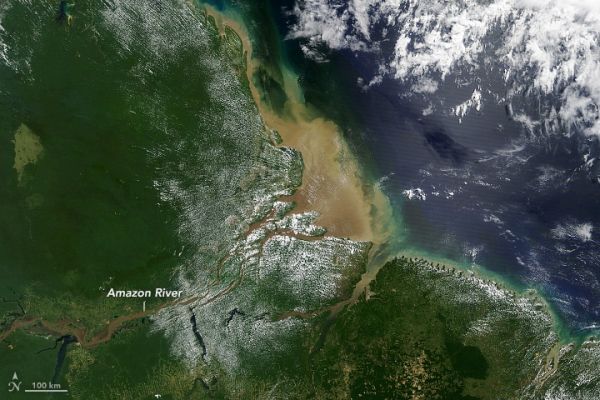Every day, some 1.3 million tons of sediment pour from the mouth of the Amazon River into the Atlantic Ocean. The abundance of sediment—bits of rocks, soil, and clay carried by currents or resting on the bottom—is what gives much of the main stem of the Amazon River its milky brown color. The natural-color image above highlights the Amazon delta and estuary as it was observed by the Moderate Resolution Imaging Spectroradiometer (MODIS) on NASA’s Terra satellite on July 29, 2020.
Note also the low-altitude cumulus clouds, sometimes called popcorn clouds, tracing the landscape. Warm, humid air rises from the forest and cools as it rises, resulting in the development of the clouds. But the river waters—and the air above them—are cooler, so there is less moisture rising into the air.
Almost all of the sediment that reaches the Atlantic Ocean via the Amazon River has traveled a tremendous distance, much of it from the foothills of the Andes Mountains in Peru and Bolivia. Hydrologists estimate that erosion from the mountainous far western part of the river basin contributes about 85 to 90 percent of all the sediment that reaches the sea.
Continue reading at NASA Earth Observatory
Image via NASA Earth Observatory


